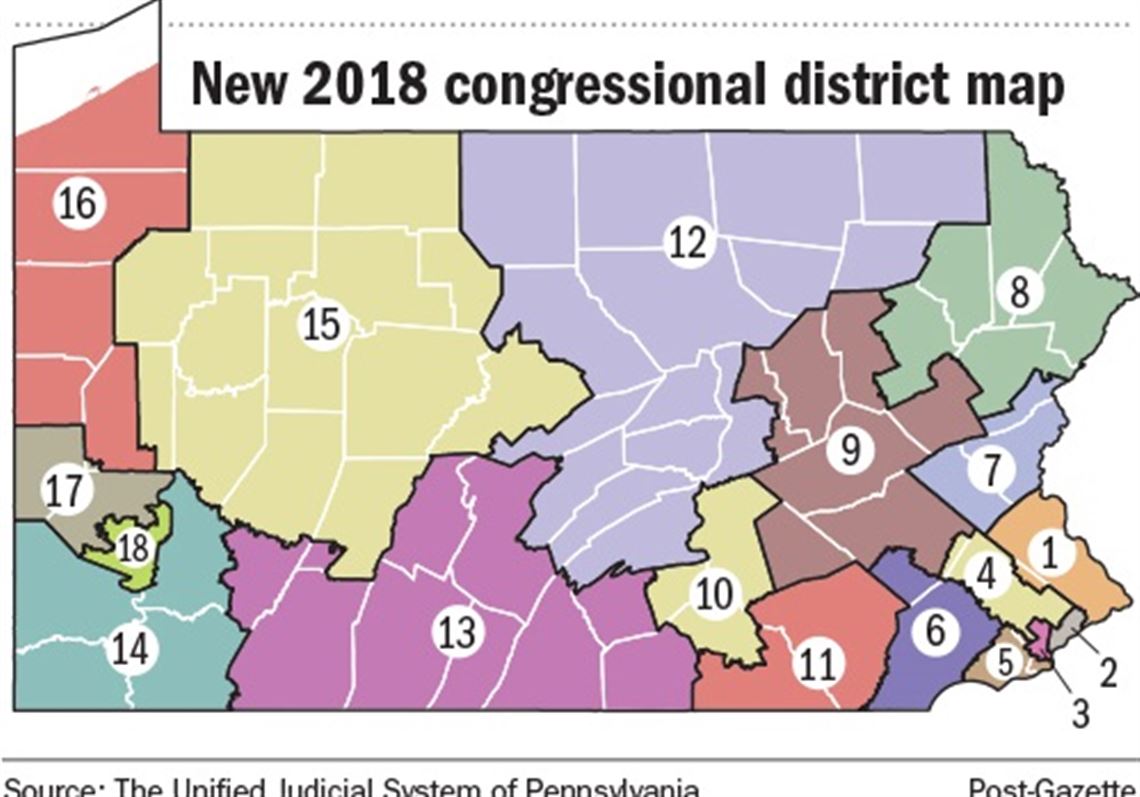Pennsylvania Republicans were right to challenge the new congressional map imposed by the state Supreme Court last month. The state’s high court usurped the role of the Legislature in composing boundaries for legislative districts for the U.S House of Representatives. It was a bad move that will have consequences down the line.
But after Monday’s dual actions at the federal level — a panel of three U.S. District Court judges dismissed the appeal, and the U.S. Supreme Court declined to intervene — the Republicans are also right to put the fight aside for now. The prospect of the May 15 primaries in a new world of districts should concentrate the mind.
To review the action: On Jan. 22, the state Supreme Court correctly ruled that the state’s congressional district map “clearly, plainly and palpably violates” the state constitution. Drawn in 2011 by the Republican-controlled Legislature, the map was a high achievement in the cynical but age-old craft of gerrymandering — drawing congressional districts so contorted that some looked like cartoon characters. Pennsylvania Democrats argued that the twisted boundaries put them at a serious disadvantage. Only five of the 18 congressional seats were held by Democrats, which didn’t reflect vote totals statewide.
The state Supreme Court, however, set improbable conditions. It ordered the Legislature to redraw the map by Feb. 9 and the governor to approve it by Feb. 15 — or else the court would impose its own. As expected, Gov. Tom Wolf didn’t like the Republicans’ map. On Feb. 19, the court handed down a map that it created with the guidance of a Stanford University law professor. Across the nation, Democrats cheered. Most analysts predict that the party will pick up at least three seats in the midterm elections.
At a glance, the new map looks reasonable. The districts are compact and contiguous. But the whiff of political influence remains.
The state Supreme Court is composed of five Democrats and two Republicans. The decision to impose the map was 4-3. The two dissenting Republicans were joined by Justice Max Baer, a Democrat who has been a voice of reason throughout. He agreed that the 2011 map was flawed, but that the greater ill was rushing a map through. He believed that the state could tolerate another election under the map. “The Court’s remedy threatens the separation of powers ... by failing to allow our sister branches sufficient time to legislate a new congressional districting map,” he wrote in a dissent, “and foments unnecessary confusion in the current election cycle.”
Confusion now abounds. Candidates are scrambling to run in the newfangled districts, leaving voters scratching their heads.
The thing about politics, however, is that all the number-crunching in the world doesn’t determine the outcome. Democrats, Republicans and third-party candidates have to get out there and earn the vote amid the swirl of influences. “I think we’re accepting the decision,” said state Senate Majority Leader Jake Corman, a Republican from Centre County. “[We] don’t like it, but that’s life and we move on.”
The more important point is that the excesses of gerrymandering have been matched by judicial overreach. Usurpation of power can cut both ways. The Democrats who are so pleased with the ruling should realize that the state Supreme Court, at some point, will return to a Republican majority. Will they stay silent if that court hands down a politically tainted decision? Rep. Cris Dush, a Republican from Jefferson County, introduced legislation to impeach the four Democratic justices who voted to impose the new map. His bill will probably fade away, but it’s a measure of the resentment that legislating from the bench can breed.
First Published: March 23, 2018, 4:00 a.m.
















